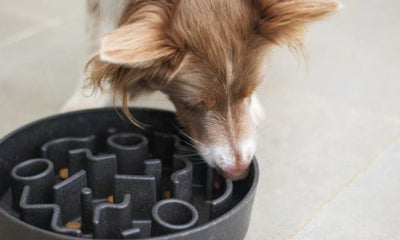Siamese Fighting Fish, also known as Betta Fish, are popular aquarium fish admired for their vibrant colours and long, flowing fins. Despite their beauty, bettas require specific care to thrive. In this comprehensive guide, we'll cover everything you need to know to provide the best care for your Siamese Fighting Fish.
Tank Setup
You should provide a minimum tank size of 15L for a single betta fish. Larger tanks are preferable as they offer more stable water parameters and swimming space. You should fit your tank with a filter that has a low flow rate to prevent betta fins from being damaged. Bettas prefer slow-moving or still water, so choose a filter with adjustable flow settings.
Use smooth gravel or sand substrate in the tank to prevent injuries to the betta's delicate fins. Avoid sharp or rough substrates that may cause abrasions. Provide live or silk plants with soft leaves to create hiding spots and mimic the betta's natural habitat. Avoid plastic plants with sharp edges that can tear betta fins.
Heating and Water Parameters
You should maintain a stable water temperature between 24 and 28°C using a submersible aquarium heater. Avoid sudden temperature fluctuations, as bettas are sensitive to changes in water temperature.
Aim for a slightly acidic to neutral pH level between 6.5-7.5 Keep ammonia and nitrite levels at zero and nitrate levels below 20 ppm. Perform regular water tests and partial water changes to maintain optimal water quality. Bettas prefer soft to moderately hard water with a general hardness (GH) between 5-15 dGH.
Feeding
Offer a varied diet of high-quality betta pellets, flakes, or freeze-dried foods. Supplement their diet with occasional treats such as bloodworms or brine shrimp. Feed bettas small amounts of food once or twice daily, only what they can consume within a few minutes. Overfeeding can lead to obesity and digestive issues.
Tank Maintenance
Perform weekly partial water changes of 20-30% to remove accumulated waste and maintain water quality. Use a gravel vacuum to clean the substrate during water changes, removing debris and uneaten food from the tank bottom.
Behavioural Enrichment
Avoid housing male bettas together or with other aggressive fish. Female bettas can be kept together in larger tanks with plenty of hiding spots. Stimulate bettas mentally and physically by providing floating toys, mirrors (for short periods), and occasional changes in tank decor.
Health Care
Monitor bettas daily for signs of illness or distress, such as lethargy, loss of appetite, abnormal swimming behaviour, or changes in appearance. Quarantine new fish before introducing them to the main tank to prevent the spread of diseases. Treat illnesses promptly with appropriate medications under the guidance of a qualified veterinarian experienced in fish care.
By following these comprehensive care guidelines, you can create a safe and comfortable environment for your Siamese Fighting Fish, allowing them to thrive and display their natural beauty for years to come. Remember, responsible fishkeeping requires commitment, observation, and ongoing education to meet the evolving needs of your aquatic pets.
We hope this guide helps give you an understanding of the basic needs of a siamese fighting fish. All information in our care guides are based upon our own experience, and in any medical situations, you should always consult your vet.






